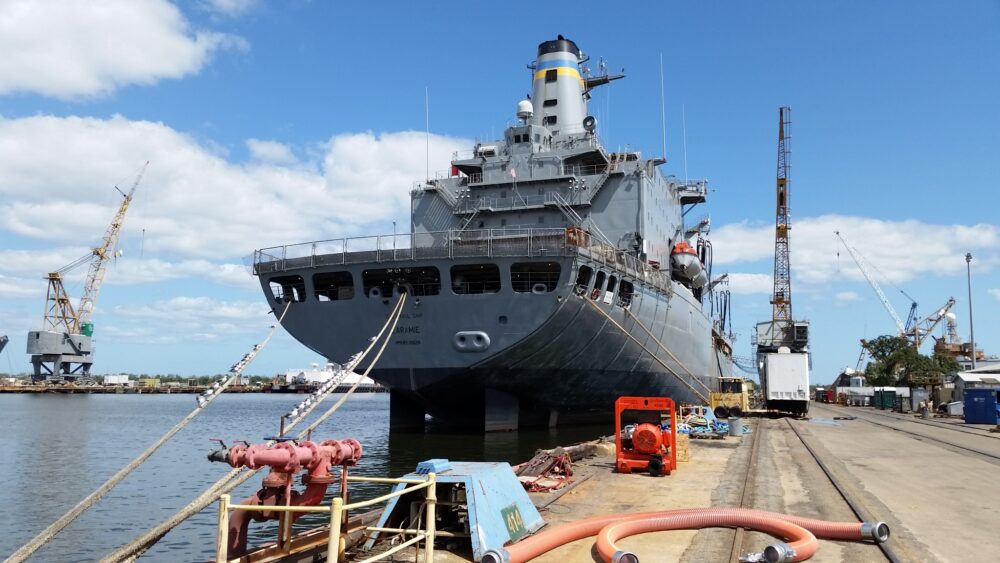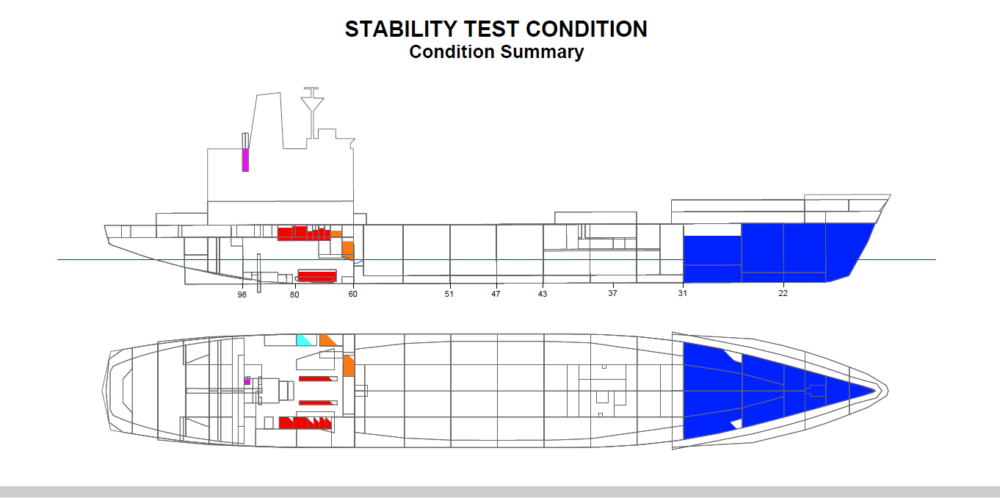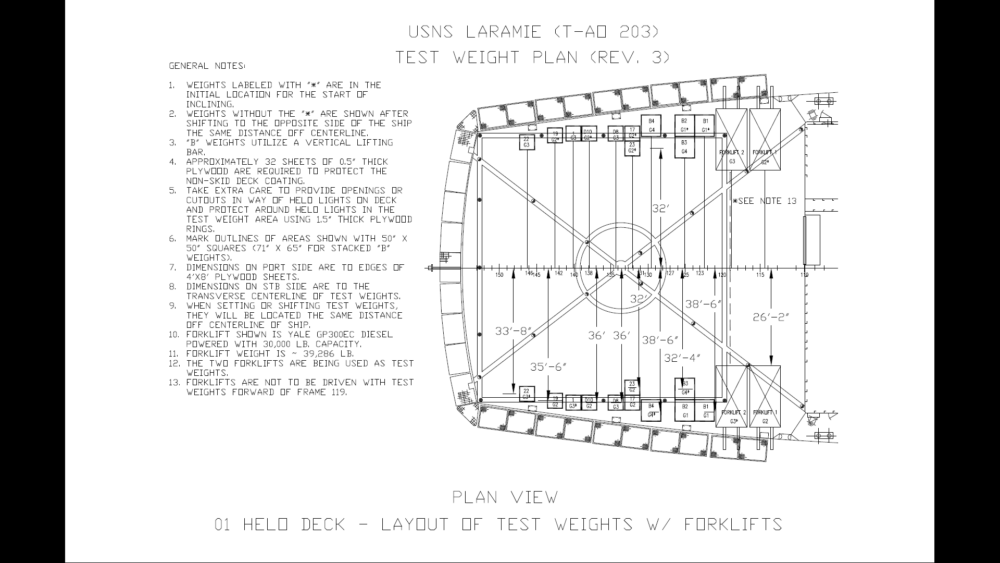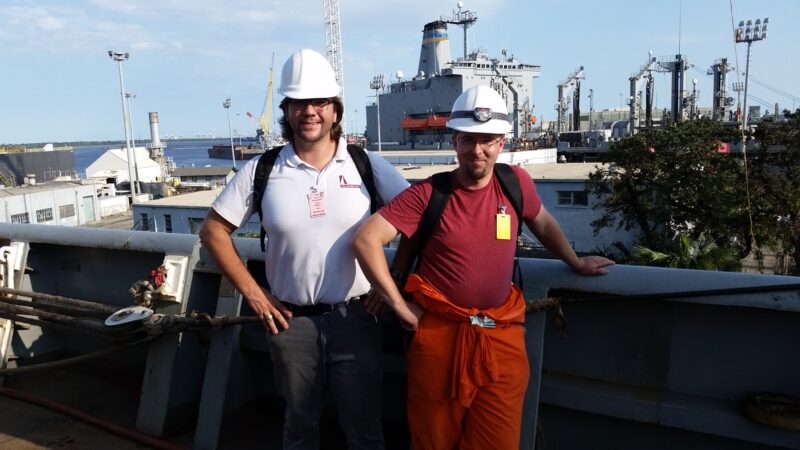In the Fall of 2019, CMC was tasked by Detyens Shipyards, Inc. to conduct a Deadweight Survey and Stability Test (Inclining Experiment) on the Military Sealift Command (MSC) Fleet Oiler Ship USNS LARAMIE (T-AO 203). With a length of 677 feet, she was built by Avondale Shipyard in New Orleans, LA and put into service in May, 1996.
A unique feature of this 42,000 ton (full load) ship is that she was among three of the last Henry J. Kaiser class ships built with a double hull in order to comply with the Oil Pollution Act of 1990.

This was the fourth ship at Detyens Shipyard to have a stability test performed by CMC, and the second T-AO Class ship. Previously, CMC completed a successful stability test of the single hull USNS JOSHUA HUMPHREYS (T-AO 188) in mid-2019.
CMC surveyed the ship over a period of several weeks during the 90 day availability, cataloging 439 tons and over 3,000 entries on the “items to deduct” list for the survey report, accounting for item weights and locations on the ship. The final official survey and Stability Test was conducted with ABS and Naval Architects from MSC N7 over a period of two days, which is typical for this type of ship. The Stability Test was performed on the second day.
One of the challenges with developing a stability test procedure is customizing it for the shipyard’s facility in terms of available pier space, crane capacity and reach, and test weight availability. For this ship, CMC’s procedure utilized two very large 30,000 lb. capacity rented Forklifts that not only shifted the weights, but also served as certified test weights themselves after weighing them at the shipyard with a certified scale. A layout of the test weights and Forklifts on the deck of the ship is shown below.
Each of the two Forklifts weighed roughly 39,000 pounds (not including a test weight). CMC thoroughly inspected the deck structure and performed both hand calculations and a Finite Element Analysis (FEA) of the deck plating and support beams below to ensure that at no time would the deck structure be overloaded during the stability test. The FEA was performed using CMC’s in-house tool, FEMAP with NX NASTRAN.

In the early morning of September 20th (which happened to be Randy Brown’s birthday), the Stability Test began with sounding all tanks aboard the ship and then taking precise freeboard measurements at five locations on each side of the ship. The ship had a trim of just under 2.0 feet by the stern. Fortunately, the weather was good.

Shortly after lunch at around noon, with a great deal of coordination between the CMC and MSC Naval Architect teams, ship’s crew, and shipyard personnel, test weights began shifting in detailed planned steps according to the ABS approved procedure with precise measurements of three separate 32+ foot long pendulums swinging after weight shift step in order to produce as near a perfect plot of results as possible. It may sound simple, but it usually takes all day to complete the test on this type of ship, weather permitting. The team successfully completed the test before dark.
The two-day evolution of a Deadweight Survey and Stability Test for this type of ship, with hundreds of compartments and thousands of items to account for, usually requires several experienced Naval Architects. CMC subcontracted The Shearer Group and Datawave Marine Solutions for additional resources to ensure that everything went smoothly.
The Stability Test was a success and CMC completed the report soon after, submitting it to MSC N7 for their approval. The American Bureau of Shipping (ABS) approved the report in November, 2019. The ship’s change in lightship displacement was about 68 tons with a longitudinal shift of just over one foot and a rise in the vertical center of gravity (VCG) of 0.2 feet.





